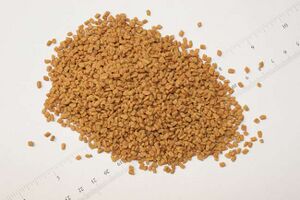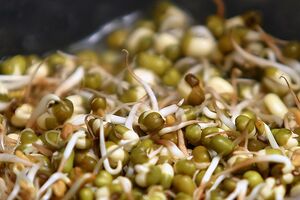Fenugreek: Difference between revisions
No edit summary |
No edit summary |
||
| Line 8: | Line 8: | ||
}} | }} | ||
<!-- /seo --> | <!-- /seo --> | ||
<gallery widths= | <gallery widths=300px heights=300px perrow=5> | ||
Image:Fenugreek_seeds.jpg|Fenugreek seeds | Image:Fenugreek_seeds.jpg|Fenugreek seeds | ||
Image:Sprouting_fenugreek_seeds.jpg|Sprouting fenugreek seeds | Image:Sprouting_fenugreek_seeds.jpg|Sprouting fenugreek seeds | ||
Latest revision as of 10:17, 23 September 2024
-
Fenugreek seeds
-
Sprouting fenugreek seeds
-
Fenugreek leaves
Plant name: Trigonella foenum-graecum
Indian name: Methi
Fenugreek seeds are a rich source of the polysaccharide galactomannan. They are also a source of saponins such as diosgenin, yamogenin, gitogenin, tigogenin, and neotigogens. Other bioactive constituents of fenugreek include mucilage, volatile oils, and alkaloids such as choline and trigonelline.
A side effect of consuming even small amounts of fenugreek (even as just an infusion in water) is a maple syrup or curry smell in the eater's sweat and urine, which is caused by the potent aroma compound sotolone. Fenugreek is frequently used in the production of flavouring for artificial syrups. The taste of lightly toasted fenugreek is additionally based on substituted pyrazines, as is cumin. By itself, it has a somewhat bitter taste. Fenugreek seeds are a common ingredient in curry powders (especially Madras) and masalas. To me, the taste and smell of fenugreek is that of a vindaloo curry.
Grind the dried seeds with a coffee grinder when you need them.
Great with:
Find recipes that contain 'Fenugreek'
#fenugreek #potatoes #pulses #vindaloocurry #herbs #spices #rice #maplesyrup #lamb #coffeegrinder #tomatoes


